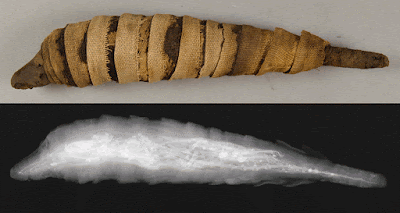By Claire Eamer
I recently wrote an article for
Hakai Magazine, an online magazine about coastal life and science, on the accuracy (or lack of it) in t
he way whales are portrayed in children's books. Researching that article led me to a great irony: whole species and populations of cetaceans -- both whales and dolphins -- are at risk of extinction because of humans, while, at the same time, we humans are just realizing how amazing and possibly how like us cetaceans are. We could lose whales -- or, at least, a great many of them -- before we really get to know them.
 |
| A blue whale surfaces in the open ocean. Pixabay photo |
The Bad News First
 |
Instead of teeth, blue whales and
right whales have baleen, plates
made of keratin, that sieve food
out of the water.
Claire Eamer photo |
The bad-news side of that equation is how much damage we have already done to the world's whales. Take, for example, the blue whale, the largest animal that ever lived on Earth. Before the days of commercial whaling,
the world population was probably about 250,000. Today, 50 years after an international ban on hunting blue whales went into effect, the world population has recovered to somewhere between 10,000 and 25,000 individuals, scattered across all the world's oceans except the Arctic Ocean. That's a tenth or less of what the world once supported.
Other whale species are further from recovery -- some maybe too far. North Atlantic right whales had a terrible year in 2017. At least 17 died in the waters off Atlantic Canada and the Atlantic coast of the United States,
most as a result of ship strikes or entanglement in fishing gear. The most recent estimates put the population of North Atlantic right whales at about 430. About 100 are reproductive females, but after the most recent breeding season no new calves have been spotted.
Some scientists have warned that the whales are just a couple of decades from extinction if nothing changes.
The waters around southern Vancouver Island, where I live, are home to a
population of killer whales that is in just as much trouble as the North Atlantic right whales. Maybe even more trouble. The southern resident killer whales are fish-eaters -- and a whale can eat a lot of fish. They rely heavily on chinook salmon, which used to return to their spawning grounds along the coast of the Pacific Northwest in huge numbers. But commercial fishing, habitat destruction, and contaminants have reduced the numbers of chinook and, along with them, the numbers of fish-eating killer whales. The southern resident killer whale population is down to just 76 individuals at last count, and even
those few have having trouble finding enough salmon to stay alive and healthy.
 |
Killer whales, whether they eat fish or mammals, have impressive sets
of sharp teeth to catch and hold their prey. Claire Eamer photo |
And Now the Good News
The good news is that we're learning a lot about whales, both through science and through a
growing recognition of the traditional knowledge of whale-hunting cultures, such as the Inuit and other peoples of the Arctic. Perhaps if we know enough about them, we will care enough to save and protect them. As a start, here are some cool facts about whales.
Whales have cultures. They pass knowledge and forms of communication down from generation to generation. The southern resident killer whales know how and where to hunt for salmon, and they pass that information on to their calves. The Bigg's killer whales (also known as transients) know how to hunt sea mammals, such as seals and sea lions, and they pass that information along, generation after generation, possibly for millennia.
A 2010 genetic study showed that Bigg's killer whales, which often hunt in the same waters as the southern resident killer whales, have been separate from other killer whale populations for 700,000 years.
Whales have language. And they sing songs. The
long and complex songs of humpback whales have fascinated scientists and non-scientists alike for decades, but they're not the only singing whales. Most recently,
scientists working near Svalbard in the Arctic catalogued 184 different song types sung by bowhead whales in the icy dark of an arctic winter.
Whales are like us in another important way -- they're mammals and they breathe air. However, over millions of years, their bodies have adapted to life in the water. Their nostrils moved to the tops of their heads and became blowholes that can suck in a lungful of air at the water's surface. The passage leading from their mouths to their lungs -- that's what lets us breathe through our mouths -- closed off so that they could gulp up food under water without drowning.
 |
A Bigg's killer whale, its blowhole clearly visible, swims past
the shore of Vancouver Island. Alan Daley photo |
And they learned to sleep without breathing in water instead of air. A whale or dolphin rests only half its brain at a time. The other half stays slightly awake in order to make sure the animal opens its blowhole to take a breath of air and closes it to keep out water. After the sleeping half of the brain has had a thorough rest, it takes over breathing and swimming duties while the other half sleeps. Scientists call this method
cat-napping but
whale-napping seems a much better name!
That's just a taste of the amazing things we've learned about whales. If we can avoid harming them further with noise, pollution, fishing gear entanglement, ship strikes, habitat destruction, and all the other dangers we have created for them, we could learn so much more.













